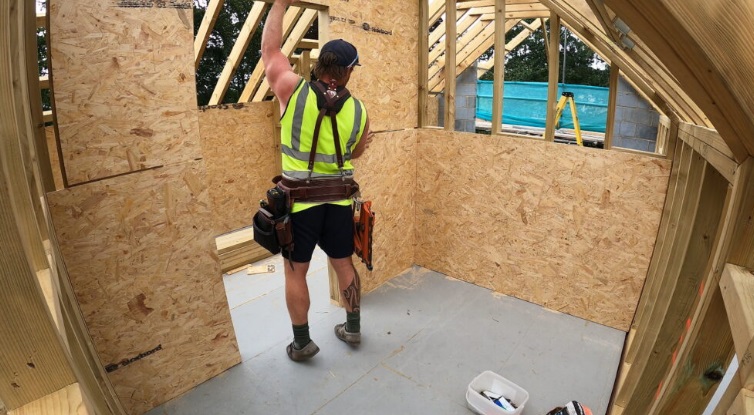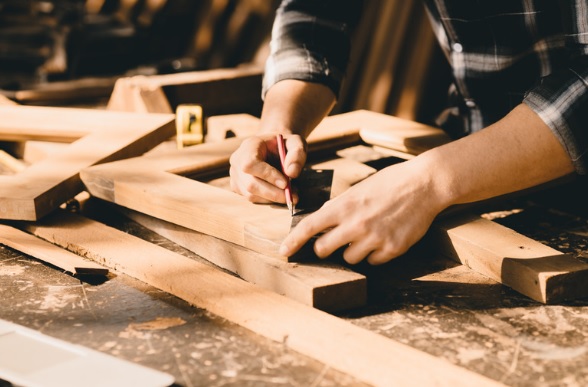Joiners Stirling Bridge of Allan
Joiners in Cambusbarron Stirling and Bridge of Allan represent the continuation of a craft that dates back centuries, playing a key role in both the preservation of historical architecture and the creation of modern, functional spaces. Whether they are working on bespoke joinery projects, custom furniture, or structural woodwork, joiners in this area are known for their skill, attention to detail, and ability to blend traditional techniques with modern design needs.
Stirling, with its rich history and medieval architecture, is home to a unique blend of modern and ancient buildings, and joiners play a critical role in maintaining this heritage while meeting the demands of contemporary construction. Bridge of Allan, just a few miles north of Stirling, complements this setting with its Victorian-era buildings and picturesque surroundings. Together, these towns create an environment where joinery is as much about preservation as it is about innovation.
This essay explores the role of joiners in Stirling and Bridge of Allan, examining the services they offer, the importance of craftsmanship in joinery, and the ways in which they contribute to maintaining the character and functionality of buildings in the region.
Joinery Services in Stirling and Bridge of Allan
Joiners in Stirling and Bridge of Allan offer a wide range of services, from everyday home improvements to specialized restoration work on historic buildings. Their expertise covers a spectrum of joinery tasks, including custom furniture, interior woodwork, staircases, doors, windows, and architectural elements like moldings and paneling. These services can be divided into a few key areas:

1. Bespoke Joinery
One of the most sought-after services provided by joiners in the region is bespoke joinery. This involves creating custom-made wooden pieces designed to fit specific spaces or requirements. Whether it’s custom cabinetry for a kitchen, built-in shelving for a living room, or handcrafted doors and windows, bespoke joinery is prized for its ability to blend functionality with aesthetics.
In Stirling and Bridge of Allan, where many homes feature traditional architectural styles, bespoke joinery allows homeowners to enhance their properties while preserving the character of their buildings. Joiners often work closely with clients to design and create pieces that complement the existing style of a home, whether it’s a Victorian townhouse or a modern build.
2. Home Renovations and Extensions
Joiners are also integral to home renovation projects, where their skills are essential for tasks like installing new staircases, refurbishing wooden floors, fitting skirting boards, and crafting custom doors and windows. In older homes, these projects can involve restoring or replicating original woodwork, ensuring that any updates or changes respect the home’s architectural integrity.
For home extensions, joiners are often involved in structural aspects of the work, such as timber framing, as well as finishing touches like interior woodwork. Their craftsmanship ensures that new additions to a property blend seamlessly with the existing structure, both in terms of functionality and design.
3. Restoration of Historical Buildings
Stirling, with its medieval and Renaissance architecture, and Bridge of Allan, known for its Victorian heritage, both contain a wealth of historical buildings. Maintaining and restoring these structures requires a specialized set of skills, and joiners are crucial to this process. When working on historical buildings, joiners must be able to replicate traditional methods and materials, using hand tools and techniques that date back centuries to ensure authenticity in their work.
Restoring timber frames, sash windows, doors, and intricate woodwork is often a painstaking process, but it’s essential for preserving the region’s architectural heritage. In some cases, joiners may need to create new elements that are indistinguishable from the original, blending old and new seamlessly to maintain the building’s character while ensuring modern functionality.
4. Roofing and Loft Conversions
Joiners are frequently involved in roofing projects, particularly when it comes to timber framing and structural support. They are responsible for constructing and maintaining the wooden frameworks that form the basis of roofs, ensuring that they are both sturdy and aesthetically appropriate for the building.

Loft conversions are another area where joiners excel, as they are often tasked with transforming unused attic spaces into functional rooms. This might involve installing new floorboards, staircases, windows, and other wooden elements to create a cohesive, livable space.
5. Windows, Doors, and Staircases
Custom windows and doors are often key features of a home, providing both aesthetic value and functionality. Joiners in Stirling and Bridge of Allan are skilled in crafting these elements to suit the specific requirements of a building. In many historical homes, this can involve creating traditional sash windows or replicating ornate wooden doors.
Staircases are another area where joiners play a crucial role. Whether it’s a modern, minimalist design or a traditional, intricate wooden staircase, joiners work to ensure that the staircase is both a functional and visually striking feature of the home.
Importance of Craftsmanship in Joinery
The defining feature of joinery is craftsmanship. The best joiners in Stirling and Bridge of Allan are those who take pride in their work, ensuring that each piece they create or restore is of the highest quality. This commitment to craftsmanship is what sets joiners apart from mass-produced woodworking. It’s not just about building something that works; it’s about creating something that lasts, looks beautiful, and adds value to a property.
Craftsmanship in joinery is also about precision. Every cut, joint, and fitting must be made with exacting accuracy to ensure that the final product is not only visually appealing but also structurally sound. This is particularly important in custom projects or historical restorations, where a small mistake could undermine the integrity of the entire piece or structure.
Combining Tradition with Modern Techniques
In Stirling and Bridge of Allan, joiners are often tasked with combining traditional woodworking techniques with modern materials and methods. This is especially important in historical restoration projects, where maintaining the authenticity of a building’s original design is crucial. Joiners must be able to work with traditional tools and methods, such as hand-cut joints and timber frame construction, while also incorporating modern materials and technology to meet current building standards.
At the same time, joiners working on new builds or modern renovations must be proficient in using contemporary materials, such as engineered wood and composite materials, which offer benefits like greater durability and sustainability. The ability to combine the best of both worlds—traditional craftsmanship and modern innovation—is a hallmark of a skilled joiner.
Sustainability and the Use of Eco-Friendly Materials
In recent years, there has been an increasing focus on sustainability in the construction and woodworking industries. Joiners in Stirling and Bridge of Allan are responding to this demand by using sustainable materials and practices. This includes sourcing timber from sustainably managed forests, using non-toxic finishes and adhesives, and minimizing waste by recycling or repurposing offcuts.
Eco-friendly materials such as reclaimed wood are also becoming popular in joinery projects. Reclaimed wood offers a unique aesthetic, often featuring weathered textures and distinctive grain patterns that add character to a piece. It also has the benefit of being more environmentally friendly, as it reduces the need for new timber.
Choosing the Right Joiner
When selecting a joiner for a project in Stirling or Bridge of Allan, it’s essential to consider several factors. Experience is a key indicator of a joiner’s ability to handle complex projects, particularly in restoration work where traditional techniques are required. Clients should also look for joiners who can demonstrate a portfolio of past work, showcasing their versatility and attention to detail.
Reputation is another important factor. Joiners with strong reputations in the local community are often those who have built lasting relationships with clients, delivering high-quality work on time and within budget. Word of mouth, online reviews, and recommendations from local architects or builders are valuable resources when selecting a joiner.
Finally, clear communication is essential. A good joiner will work closely with clients to understand their needs and preferences, offering advice on materials, design, and functionality while keeping the project within the agreed-upon timeframe and budget.
Joiners in Stirling and Bridge of Allan are key figures in both the preservation of the region’s architectural heritage and the creation of modern, functional spaces. Their skills in crafting custom joinery, restoring historical buildings, and integrating traditional techniques with modern innovations make them invaluable to homeowners, businesses, and preservationists alike. Whether working on bespoke furniture, home renovations, or large-scale construction projects, joiners in these towns exemplify the best of craftsmanship, combining precision, creativity, and sustainability to produce work that stands the test of time.









